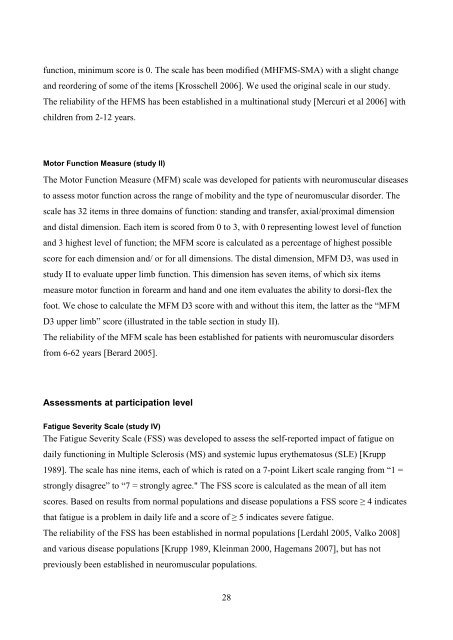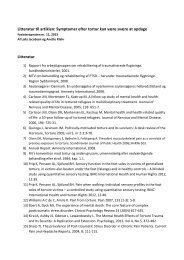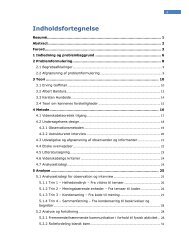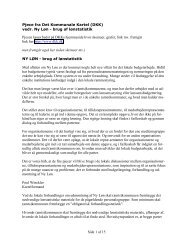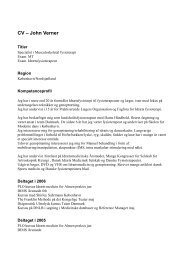Ulla Werlauff Methods to assess physical functioning - Danske ...
Ulla Werlauff Methods to assess physical functioning - Danske ...
Ulla Werlauff Methods to assess physical functioning - Danske ...
You also want an ePaper? Increase the reach of your titles
YUMPU automatically turns print PDFs into web optimized ePapers that Google loves.
function, minimum score is 0. The scale has been modified (MHFMS-SMA) with a slight change<br />
and reordering of some of the items [Krosschell 2006]. We used the original scale in our study.<br />
The reliability of the HFMS has been established in a multinational study [Mercuri et al 2006] with<br />
children from 2-12 years.<br />
Mo<strong>to</strong>r Function Measure (study II)<br />
The Mo<strong>to</strong>r Function Measure (MFM) scale was developed for patients with neuromuscular diseases<br />
<strong>to</strong> <strong>assess</strong> mo<strong>to</strong>r function across the range of mobility and the type of neuromuscular disorder. The<br />
scale has 32 items in three domains of function: standing and transfer, axial/proximal dimension<br />
and distal dimension. Each item is scored from 0 <strong>to</strong> 3, with 0 representing lowest level of function<br />
and 3 highest level of function; the MFM score is calculated as a percentage of highest possible<br />
score for each dimension and/ or for all dimensions. The distal dimension, MFM D3, was used in<br />
study II <strong>to</strong> evaluate upper limb function. This dimension has seven items, of which six items<br />
measure mo<strong>to</strong>r function in forearm and hand and one item evaluates the ability <strong>to</strong> dorsi-flex the<br />
foot. We chose <strong>to</strong> calculate the MFM D3 score with and without this item, the latter as the “MFM<br />
D3 upper limb” score (illustrated in the table section in study II).<br />
The reliability of the MFM scale has been established for patients with neuromuscular disorders<br />
from 6-62 years [Berard 2005].<br />
Assessments at participation level<br />
Fatigue Severity Scale (study IV)<br />
The Fatigue Severity Scale (FSS) was developed <strong>to</strong> <strong>assess</strong> the self-reported impact of fatigue on<br />
daily <strong>functioning</strong> in Multiple Sclerosis (MS) and systemic lupus erythema<strong>to</strong>sus (SLE) [Krupp<br />
1989]. The scale has nine items, each of which is rated on a 7-point Likert scale ranging from “1 =<br />
strongly disagree” <strong>to</strong> “7 = strongly agree." The FSS score is calculated as the mean of all item<br />
scores. Based on results from normal populations and disease populations a FSS score ≥ 4 indicates<br />
that fatigue is a problem in daily life and a score of ≥ 5 indicates severe fatigue.<br />
The reliability of the FSS has been established in normal populations [Lerdahl 2005, Valko 2008]<br />
and various disease populations [Krupp 1989, Kleinman 2000, Hagemans 2007], but has not<br />
previously been established in neuromuscular populations.<br />
28


